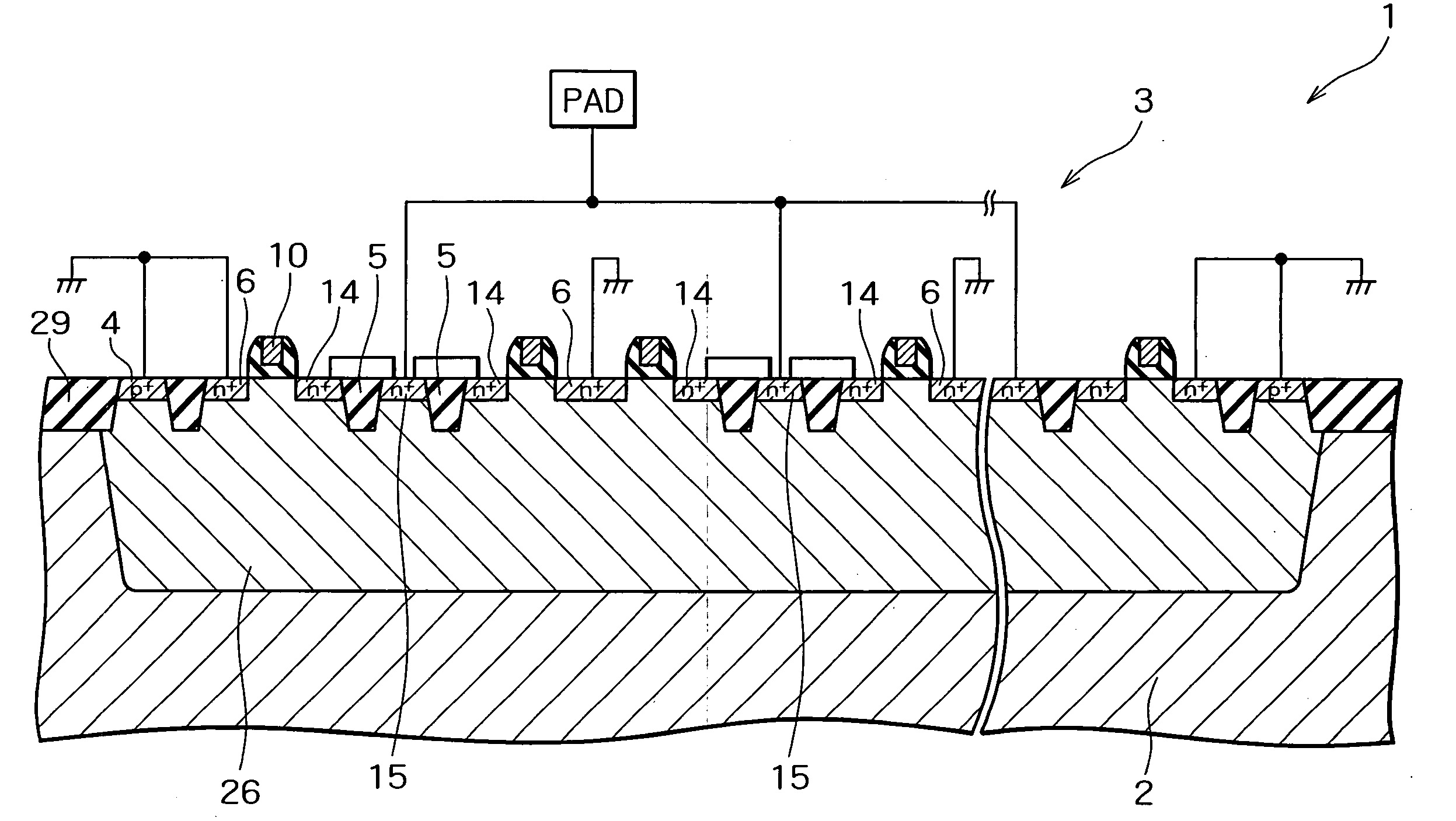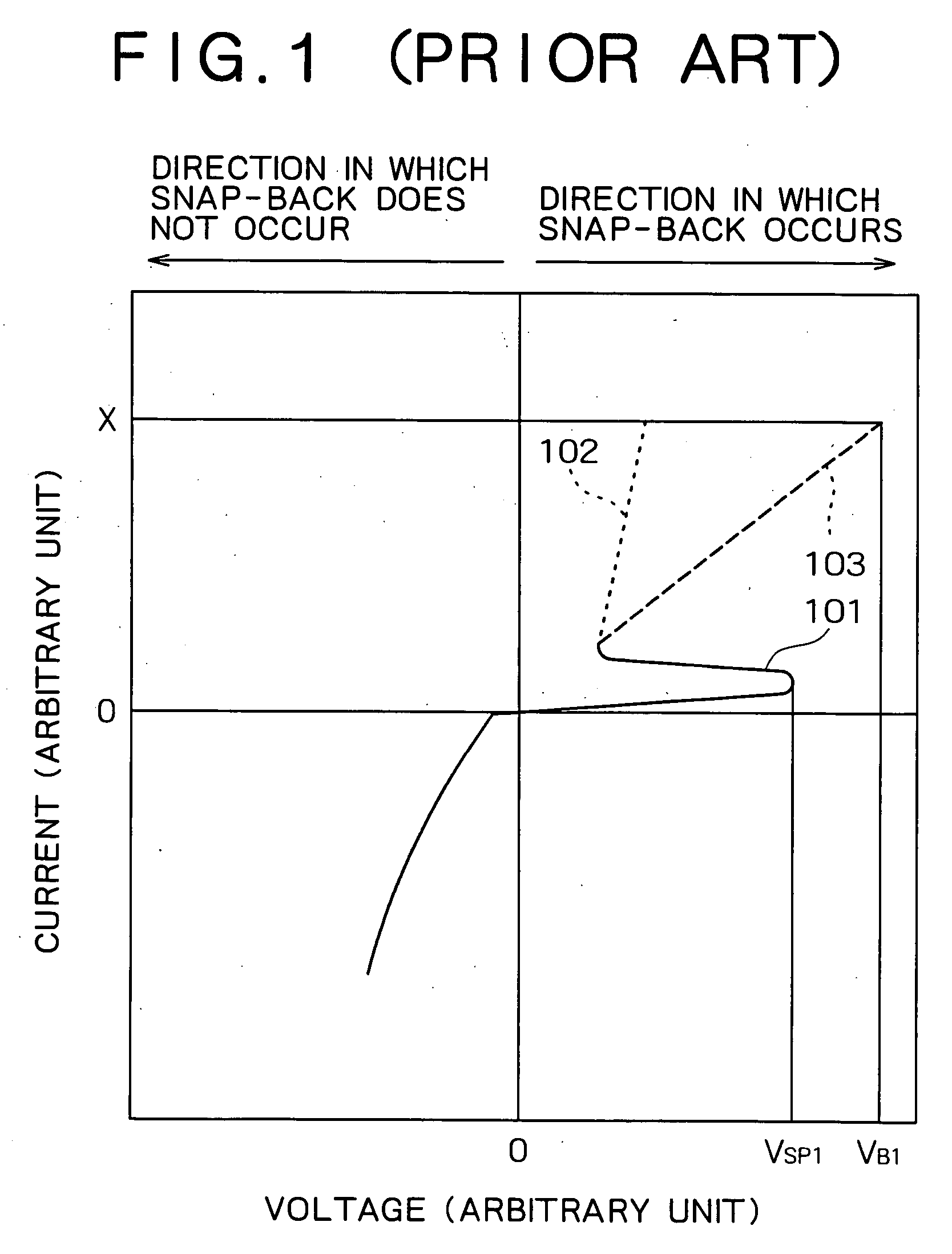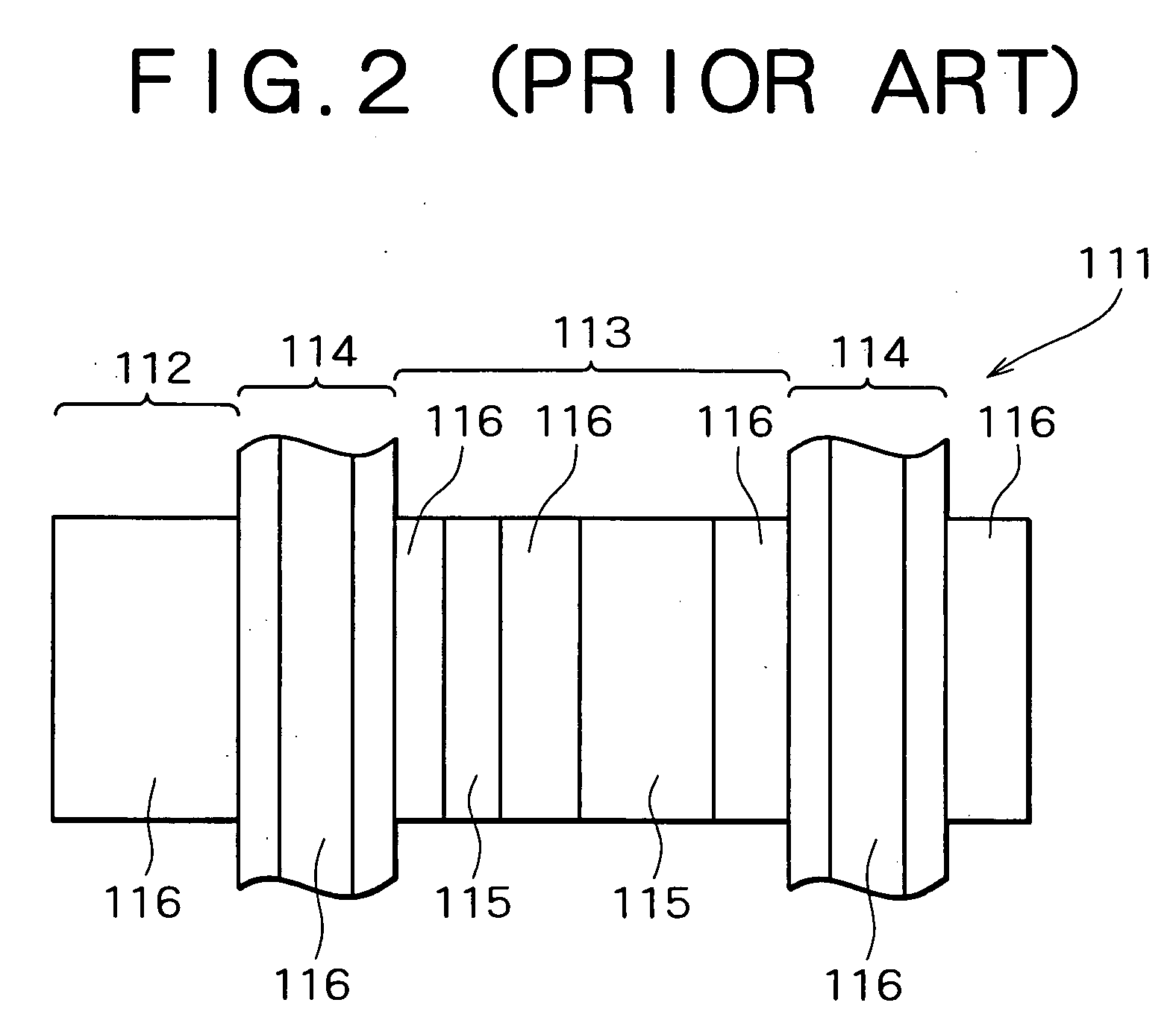Semiconductor device
- Summary
- Abstract
- Description
- Claims
- Application Information
AI Technical Summary
Benefits of technology
Problems solved by technology
Method used
Image
Examples
first embodiment
[0050] Preferred embodiments of the present invention will be specifically described below with reference to the accompanying drawings. To begin with the invention will be discussed. FIG. 4 is a plan view exemplarily illustrating the principle of the embodiment. FIG. 5 is a cross-sectional view showing a part of a semiconductor device according to the embodiment. FIG. 6 is a plan view showing an ESD protecting element in the semiconductor device according to the embodiment. FIG. 7 is a plan view showing a part of the ESD protecting element shown in FIG. 6. FIG. 8 is a perspective view showing a part of the ESD protecting element shown in FIG. 7. FIGS. 4 and 5 illustrate only the typical components of the semiconductor device of the embodiment with the other components omitted from the illustrations.
[0051] As shown in FIG. 4, the key point of the embodiment lies in that the semiconductor device, which has a first conductivity type region 301 formed at the top surface of a semiconduct...
fourth embodiment
[0087] the invention will be described next. FIG. 15 is a plan view showing an ESD protecting element according to the embodiment. As shown in FIG. 15, in the embodiment, the n+ type diffusion region 15 is separated into four n+ type diffusion regions, two n+ type diffusion regions 15b and two n+ type diffusion regions 15c, in the direction 12 in the ballast resistor region 7. In each ballast resistor region 7, the n+ type diffusion regions 15b and 15c are laid out in the order of the n+ type diffusion region 15b, the n+ type diffusion region 15c, the n+ type diffusion region 15c and the n+ type diffusion region 15b. The STI region 5 is formed between the n+ type diffusion regions 15b and 15c. The metal wire 20 is separated into two metal wires 20a in the direction 12, and the metal wire 22 is separated into two metal wires 22a in the direction 12, with a wire 25 provided between the metal wires 20a.
[0088] The contact 19a is provided at the n+ type diffusion region 15b at a positio...
PUM
 Login to View More
Login to View More Abstract
Description
Claims
Application Information
 Login to View More
Login to View More - R&D
- Intellectual Property
- Life Sciences
- Materials
- Tech Scout
- Unparalleled Data Quality
- Higher Quality Content
- 60% Fewer Hallucinations
Browse by: Latest US Patents, China's latest patents, Technical Efficacy Thesaurus, Application Domain, Technology Topic, Popular Technical Reports.
© 2025 PatSnap. All rights reserved.Legal|Privacy policy|Modern Slavery Act Transparency Statement|Sitemap|About US| Contact US: help@patsnap.com



